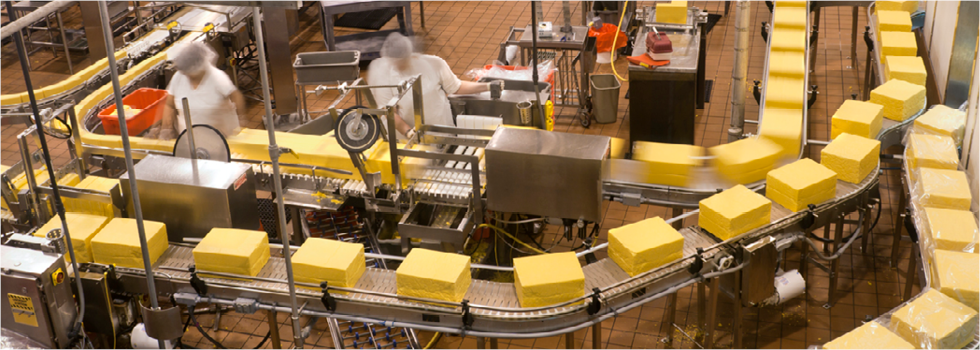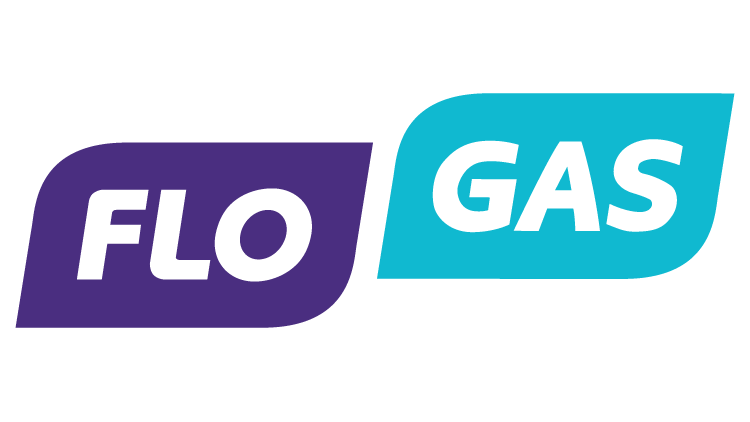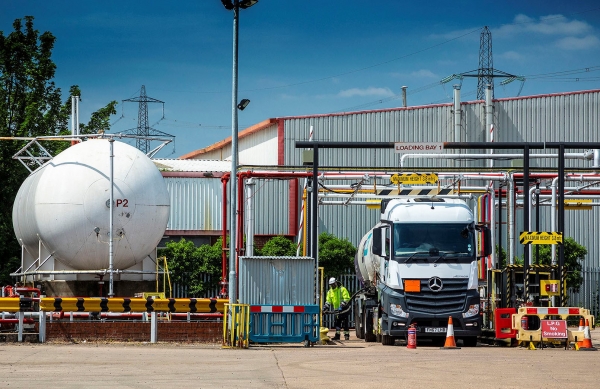Promotional Features
How liquid gas can help dairy producers cut emissions and costs
How liquid gas can help dairy producers cut emissions and costs
Q&A with Mark Rutherford, National Business Development Manager at Flogas Britain
What pressures do dairy producers face today?
Dairy producers face the same pressures as any business, they need to watch their bottom line, reduce overheads and make sure they’re running as efficiently as possible. However, the most pressing issue that’s come to light over recent years, is the need to minimise their impact on the environment and futureproof their operations.
This is an industry that’s firmly under the spotlight for its greenhouse gas (GHG) emissions and its contribution to climate change. This means it faces a huge responsibility to become more sustainable, and quickly. In the UK, it’s now law to bring GHG emissions to ‘net zero’ by 2050, and the latest target is to cut emissions by 68%[1] by 2030 (compared to 1990 levels) – so there really is no time to waste.
Dairy manufacturers need to act now if they’re going to successfully meet these targets and avoid hefty penalties down the line. This is especially true for off-grid production facilities operating off the mains gas grid and still relying on more polluting fuels like oil. What many don’t realise is, they can significantly cut their emissions and potentially make cost savings too by switching to liquid gas.[2]
What are dairy manufacturers doing to cut carbon and costs?
The good news is, the UK dairy industry has already taken major strides towards a more eco-friendly future, and this is largely thanks to the Dairy Roadmap. Led by Dairy UK, the National Farmers’ Union (NFU) and Agriculture and Horticulture Development Board (AHDB), the Roadmap is actively helping the sector navigate its way to a greener future – setting out ambitious targets for environmental improvement across the whole supply chain.
According to the Dairy Roadmap, processors need to meet specific targets across key focus areas: Climate change & energy, water, landfill & recycling, plastic & packaging, food waste and biodiversity. However, given the energy intensive nature of dairy production, energy efficiency continues to sit at the top of the agenda. The Roadmap’s next efficiency pledge for 2025 is to reduce the carbon emissions associated with the dairy production process by a significant 30%.
To reach this goal, many will start with smaller changes, like switching to energy efficient lighting for example – and it all helps! But these measures will only get you so far. Ultimately the biggest ticket savings come when you start making more integral changes, like upgrading to more energy efficient technology or switching to cleaner, greener fuels. This is a key route for off-grid dairy manufacturers who are still using carbon-heavy fuels like gas oil, kerosene, heavy fuel oil (HFO), or even coal. Upgrading to the likes of liquefied petroleum gas (LPG) or liquefied natural gas (LNG) will have a major impact on their emissions and will help put them on the right road to net zero.
Who can switch to liquid gas?
If your business is not connected to the mains gas grid, then you can benefit from liquid gas. It makes no difference what fuel you’re using now; oil, electricity or coal – you can switch over to gas. Flogas supplies two types of liquid gas, LPG and LNG, in either above or underground bulk tanks, or gas bottles.
Why is it becoming so popular?
Liquid gases are particularly attractive for off-grid, energy-intensive dairy producers because they can significantly cut emissions and have the potential to cut costs at the same time. They can help companies meet strict carbon reduction targets whilst improving air quality too.
They have the lowest carbon footprint of any conventional off-grid fuel. In fact, compared to oil, LPG has a 20% lower carbon intensity,[3] so switching can have a huge impact on emissions. For example, at Flogas, we’re saving businesses more than 35,000 tonnes of CO2 a year by switching them from oil to LPG.[4]
LPG and LNG are also smoke-free burning fuels that emit far fewer pollutants[5], including nitrous oxides (NOx) and sulphur oxides (SOx). Plus, they virtually eliminate particulate matter (PM), which is a major contributor to air pollution. The benefits don’t stop there! Liquid gas is not just cleaner than other off-grid fuels, it’s also highly reliable and efficient.
How are liquid gases helping businesses transition to net zero?
Forward-thinking dairy producers that invest in liquid gases are setting themselves up for a very smooth transition to carbon neutrality. That’s because renewable green gases Bio-LPG and Bio-LNG will eventually take their place, becoming the off-grid fuels of the future.
These green gases have the exact same chemical make-up as LPG and LNG, which means those already operating on them will be perfectly placed to transition when the time is right. They can be simply dropped into the UK’s already established LPG/LNG network, and as they work using mass balance, there’s no need for any changes to infrastructure or equipment.
When it comes to hitting the net zero target, businesses need to plan ahead. LPG and LNG provide a clear transition pathway to meeting emissions reduction targets over time.
How much can dairy manufacturers save?
Flogas customers in the dairy industry have cited impressive carbon savings of up to 30% when switching from oil to gas, whilst other customers have been able to make financial savings of 22%.
The carbon and cost savings can be truly substantial, particularly for businesses switching from oil to gas. Obviously when it comes to savings, it’s site specific and every installation is different. Our experts can advise on the exact savings you can expect from switching.
What about unavoidable carbon emissions?
Carbon offsetting has become an incredibly popular option with our customers. Using ‘carbon credits’ they can offset their unavoidable gas carbon emissions by funding sustainability projects around the world that deliver quantifiable greenhouse gas reductions.
At Flogas, we always look to reduce emissions at source first, but the reality is, not everyone has the ability or capital to do everything at once. That’s why carbon offsetting has become such a valued step in the net zero transition phase. Our customers can switch to gas and offset their remaining emissions with a view to eventually becoming carbon neutral over time. It’s an excellent buffer that’s helping businesses achieve their sustainability goals.
How does the switching process work?
The key thing to know about switching to gas, is it’s easy and hassle-free. We’ll manage the whole process for you and ensure no disruption to your business or costly downtime.
Our team of experts work with you to design a bespoke solution that meets your exact energy needs. We then manage the switch from start to finish, covering civil works right through to installation and commissioning. Once you’re switched over, we continue to provide on-going support. You also get a dedicated account manager and our engineers take care of any on-going tank maintenance. It’s a stress-free, turnkey solution.
Is liquid gas a reliable fuel source?
In short, yes – very! There’s actually a global abundance of LPG and LNG. Plus, at Flogas we have the largest distribution network in the UK. This means, wherever your dairy production business is based, we can reach you easily and manage your supply. Plus, our tanks are also fitted with auto-ordering technology, so we can remotely monitor your usage and make sure we’re keeping you consistently topped up.
At Flogas, we’ve been busy converting a former National Grid LNG facility in Avonmouth, into the largest LPG storage terminal in the UK – with the capacity to store 34,564 tonnes. This has significantly increased the UK’s storage capabilities and means we’ll have a completely unparalleled, dependable supply when it’s up and running in 2022. Plus, it’ll be renewable ready, so we can support businesses as they transition to net zero.
Click here for more information on how your business could benefit from liquid gas from Flogas.
[1] https://www.gov.uk/government/news/uk-sets-ambitious-new-climate-target-ahead-of-un-summit[2] https://www.liquidgasuk.org/uploads/DOC5A5F2DC5A7907.pdf[3] Greenhouse gas reporting: conversion factors 2019 – BEIS: The role of LPG & bioLPG in Europe, WLPGA[4] Flogas Figures: August 2020[5] Greenhouse gas reporting: conversion factors 2019 – BEIS: The role of LPG & bioLPG in Europe, WLPGA


